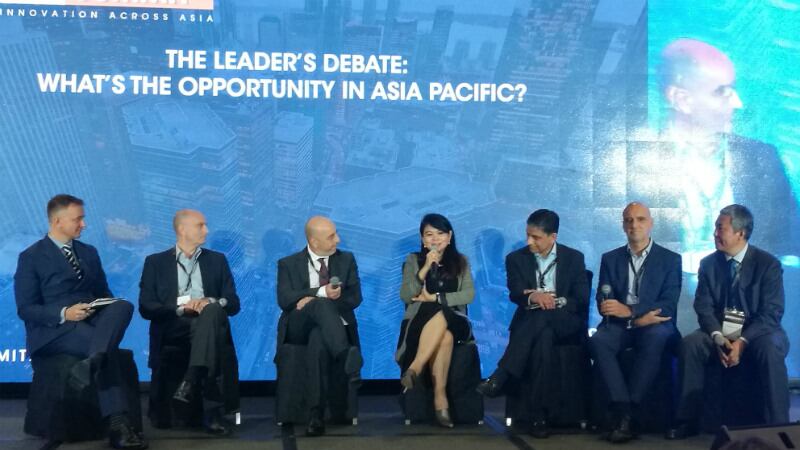Convening at a panel at the Food Industry Asia (FIA) Summit 2019, the leaders were Maurizio Brusadelli (Mondelēz International Executive VP & President, AMEA), Pascal De Petrini (Danone SVP, Non-Executive Chairman Asia), T.C. Chatterjee (Griffith Foods CEO), Jocelyn Chng (JR Group GCEO), Franck Monmont (Cargill MD, Starches, Sweeteners and Texturizers, Asia) and Yun Zhanyou (Inner Mongolia Yili Industrial Group Assistant President).
Here are the key takeaways from the discussion:
Speed and collaboration
The panel identified the speed at which change is taking place within the F&B industry as both a major challenge and opportunity for companies today.
“We don’t have time [to slowly adapt to each change],” said Monmont.
“Speed and agility and collaboration are going to be the most important factors [for F&B firms to progress] moving forward.”
In terms of collaboration, he highlighted ‘uncommon collaboration’ as an important means by which innovation can occur faster, whether it be by seeking out partners in start-ups, NGOs, policymakers or others.
Chatterjee added that change in the industry today is ‘happening faster than ever before’, but that this was not necessarily a bad thing.
“The speed of change in itself is an opportunity for those who are agile [and can adapt and innovate quickly in response to change],” he said.
Localisation: Asian F&B trends are not unilateral
According to Monmont, it is important that companies not consider Asia to be ‘just one’ entity, and make sure to see and act on the difference in consumer trends between the different countries.
“For example, the dairy market in Japan is very mature with very different consumer demands and innovation, whereas dairy in China is currently growing and in Indonesia, it is still in the infancy of its development,” he said.
He also noted the fact that 60% of the world’s population aged above 65 years of age will be located in this region by 2030, which presents a whole new nutrition challenge of ‘less calories but more nutrients’.
“[It] is important to look at the consumer paths with regard to this trend [in different countries in Asia], and figure out how to address that.”
Chatterjee concurred with this, adding that even in healthy nutrition development, the meaning of healthy food differs from country to country.
“There’s probably not one Asia [when it comes to this]. How healthy food is defined in Japan is probably from what it is in China or Singapore. So figuring out how to take the macro trend and translating this to the micro is [where the opportunities lie],” he said.
Reformulation and consumer behavioural change
With regard to reformulation in terms of lower sugar, salt and fat, Monmont admitted that there was ‘huge pressure’ on the companies with regard to these aspects.
“The key is to offer choice to consumers, from full calorie to zero calorie, and educate them at the same time,” he said.
Brusadelli added that providing the option of different portion sizes was also very important, as ‘smaller pack sizes’ would provide the opportunity for consumers to better control their intake, especially when it comes to snacks.
“Extreme [measures] will not work, [the efforts] must be balanced together with education and communication,” he emphasized.
Chatterjee agreed that it is important to remember not to try and force the consumer.
“At the end of the day, it comes down to taste and choice; we must not preach down to the consumer about what is good or healthy, [or] expect them to compromise [on their taste expectations],” he said.
“[That said], we as manufacturers do have the responsibility to influence the consumer via our products [for the better].”
Following on this point of responsibility, De Petrini said that it is important for leaders in the industry to ‘go beyond the information [and education]’.
“Singapore is an excellent example [of how leaders in the F&B industry need to do more] – there have been [health and wellness] initiatives for many years targeted at consumers, but despite these non-communicable disease rates are still on the rise,” he said.
“Beyond information, we believe we also need to influence the consumers’ habits. We cannot just [put the products there and leave it to them] to make the choice. We haven’t seen that working anywhere in the world.
“We have to go one step beyond that, to lead the consumers and help to [guide their] habits and choices. Behavioural change is not simple, but we believe that what we call ‘food pressure’, guiding when and where [they have access to our products], along with the right products [will achieve this].”


